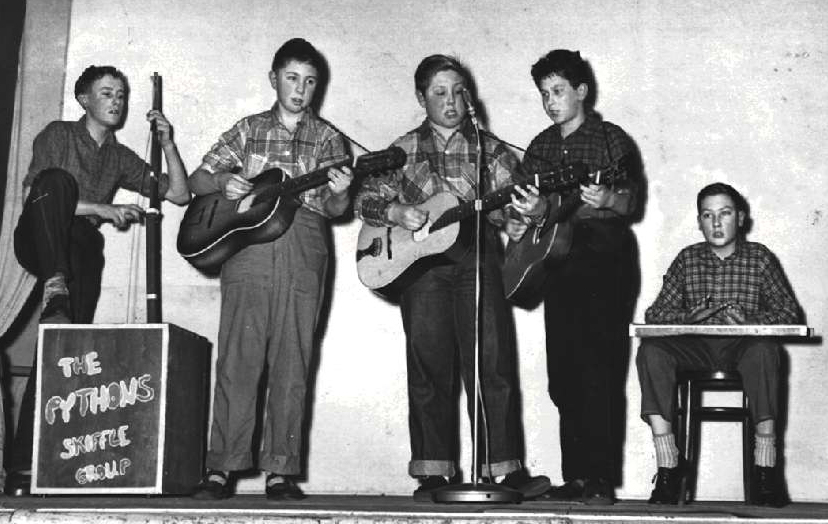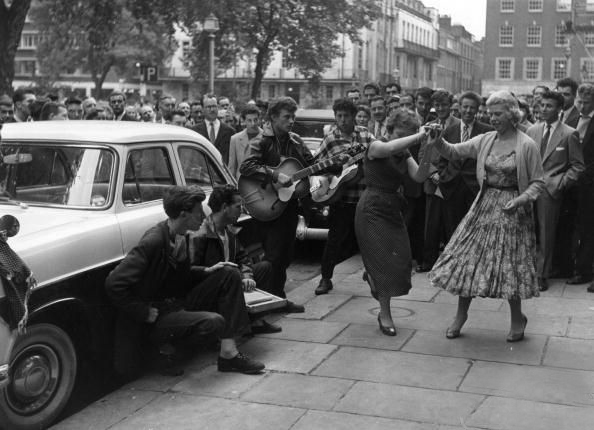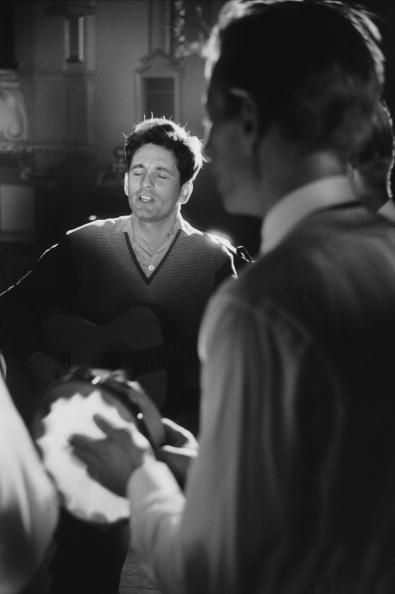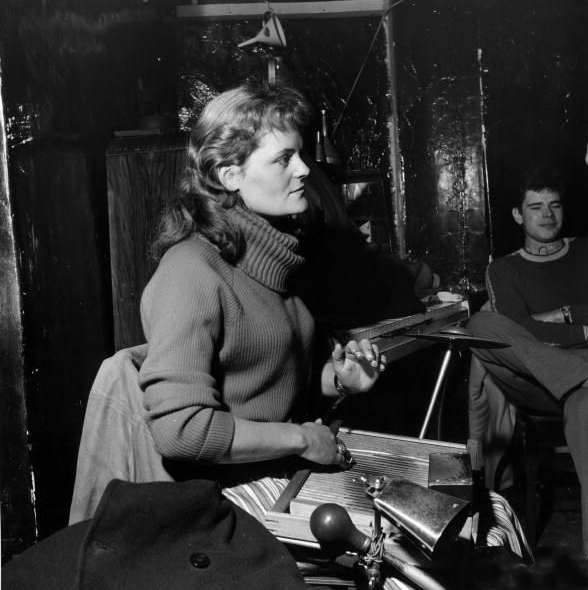| Skiffle |
 |
| British musicians pulled the term "skiffle" from an American jazz recording that described musicians in the 1920s playing on pickup instruments (washboard, kazoo, washtub bass). American bands such as The Mound City Blue Blowers took popular jazz tunes and gave them a rustic makeover. Thus, what American audiences came to call "jug band music," the British called skiffle, importing their own improvisations for musical instruments and reimagining what they thought was "authentic" American music. These notions of authenticity importantly featured acoustic instruments and African-American genres, even when the African Americans they were copying actually played electric instruments. |
| The first Brits to take up this music did so as an esoteric expression of obscure American cultural practices. They also paralleled a growing interest in traditional and folk music in Britian and the US. In the US, singers like Ledbelly and Big Bill Broonzy earned their living touring the US and Europe singing tunes like "See See Rider," accompanying themselves on guitar. In the UK, singers like Ewan MacColl (who married American Peggy Seeger) rejuvinated interest in Child and broadside ballads as well as interest in playing instruments like the guitar. |
| Trad musicians used the term "skiffle" to describe the "folk" music that some of their members played between sets. Ken Colyer was probably one of the first trad jazz band leaders to insert a "skiffle session" between sets. British bands tended to substitute a tin tea chest for the American washtub bass and rejected kazoos. More interestingly, they broadened the repertoire to include many different kinds of music—from blues and music hall to calypso—under the rubrick of "skiffle." The music became particularly popular with young teens just learning how to play their instruments. |
| Session guitarist, Big Jim Sullivan remembers that as a teen, "I used to go up to London to what eventually became the Skiffle Cellar, Soho." He remembers that this folk venue was called the "Skiffle Club." Notably, he equates "folk" and "skiffle" and separates them from "country." He also remembers that the Skiffle Club existed "before skiffle came out—it was a folk club and guys like Sonny Terry and Brownie McGee, Ramblin' Jack Elliot, you name them and they used to play there." In other words, skiffle at this point was more than just novelty music between sets during a trad show by Chris Barber or Ken Colyer. Moreover, in 1955, this skiffle venue embraced a variety of American musical forms that were primarily, but probably not exclusively acoustic. |
| Lonnie Donegan (Colyer's banjo player) would switch to guitar in order to play largely American folk tunes during these intermissions and continued this routine with the Chris Barber Band (an off-shoot of Colyer's band). The music was generally non-threatening and appealed to the very young and to amateurs, who found it easy to perform and, in 1956, skiffle music was what a multitude of young British musicians wanted to play. |
| Barber later commented that they had other kinds of music in mind sometimes. "We've been accused of going on a Muddy Waters kick since we heard his band in the flesh on our trip to the States.... Yet back in the days when Lonnie Donegan played with us, we were trying to create a Muddy sound in some of the skiffle numbers. We just didn't know how to do it." (Tony Brown. "He Plays Jazzed-up Waltzes, Uses Saxophones, Guitars—Chris Barber—Is He Playing a Dangerous Game?" In Melody Maker, 2 December 1961; p. 3.) |
| One of the ironies of skiffle is that British youth took an interest in this simple music precisely at the point that American rock and roll appeared in the UK. The first skiffle hit, Lonnie Donegan's version of "Rock Island Line," emerged just after Bill Haley and His Comets had had a British hit with "Rock around the Clock." Donegan's version of skiffle would quickly incorporate a drum kit and rockabilly style guitar and prove a catalytic agent in the development of a British rock and roll. |
 Soho Square |
 Lonnie Donegan |
 |